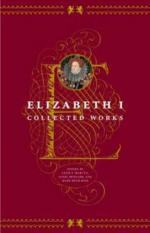|
This section contains 267 words (approx. 1 page at 400 words per page) |

|
The Doubt of Future Foes Summary & Study Guide Description
The Doubt of Future Foes Summary & Study Guide includes comprehensive information and analysis to help you understand the book. This study guide contains the following sections:
This detailed literature summary also contains Quotes and a Free Quiz on The Doubt of Future Foes by .
The following version of this poem was used to create this guide: Elizabeth I. “The Doubt of Future Foes.” Poetryfoundation.org. https://www.poetryfoundation.org/poems/44219/the-doubt-of-future-foes
Note that all parenthetical citations within the guide refer to the lines of the poem from which the quotations are taken.
Elizabeth Tudor was born at Greenwich Palace in 1533 to King Henry VIII and his second wife, Anne Boleyn. During her childhood, she was variously treated with honor as a princess and scorned as a bastard, depending on her father's erratic moods and many marriages. Nonetheless, she was extremely well-educated. After the deaths of both of her siblings – her brother Edward and her sister Mary – Elizabeth, the last of Henry VIII's surviving legitimate children, ascended to the throne at the age of 25. She was England's first reigning queen.
Elizabeth never married, styling herself as the "virgin queen" and using language borrowed from the classics, as well as imagery of masculine virtue, to claim her place. Her cousin, Mary, Queen of Scots, was her nearest surviving relative. Mary, a Catholic, had some support as a claimant for Elizabeth's throne among English Catholics, and Elizabeth had her imprisoned for almost two decades. Towards the end of this time, there was a plot to assassinate Elizabeth and put Mary on the throne in her place. It is uncertain to historians whether Mary had knowledge of this plot, but she was tried as an accomplice to treason and beheaded. Elizabeth authored "The Doubt of Future Foes" after Mary's death. Elizabeth died, childless, in 1603, and James I, Mary's son, ascended her throne.
Read more from the Study Guide
|
This section contains 267 words (approx. 1 page at 400 words per page) |

|



